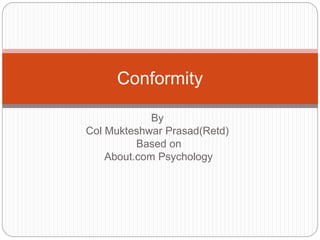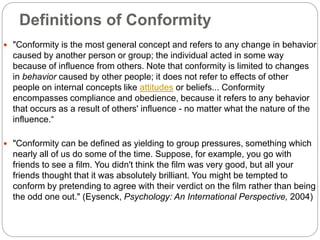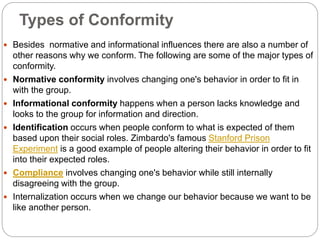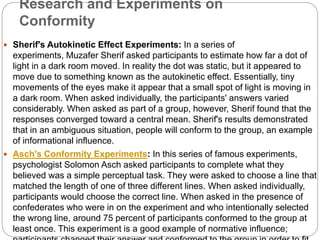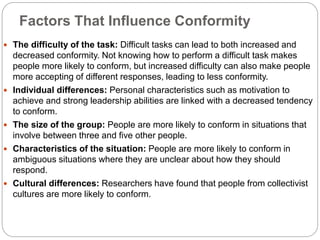Conformity is the alteration of behaviors to align with the group, driven by informational and normative influences. People conform to avoid embarrassment or because they believe the group possesses superior knowledge, which can lead to behaviors such as normative conformity, informational conformity, and compliance. Research on conformity, including famous experiments by Jenness, Sherif, and Asch, demonstrates how individuals often adjust their opinions or behavior to match those of a group, especially under ambiguous situations.
